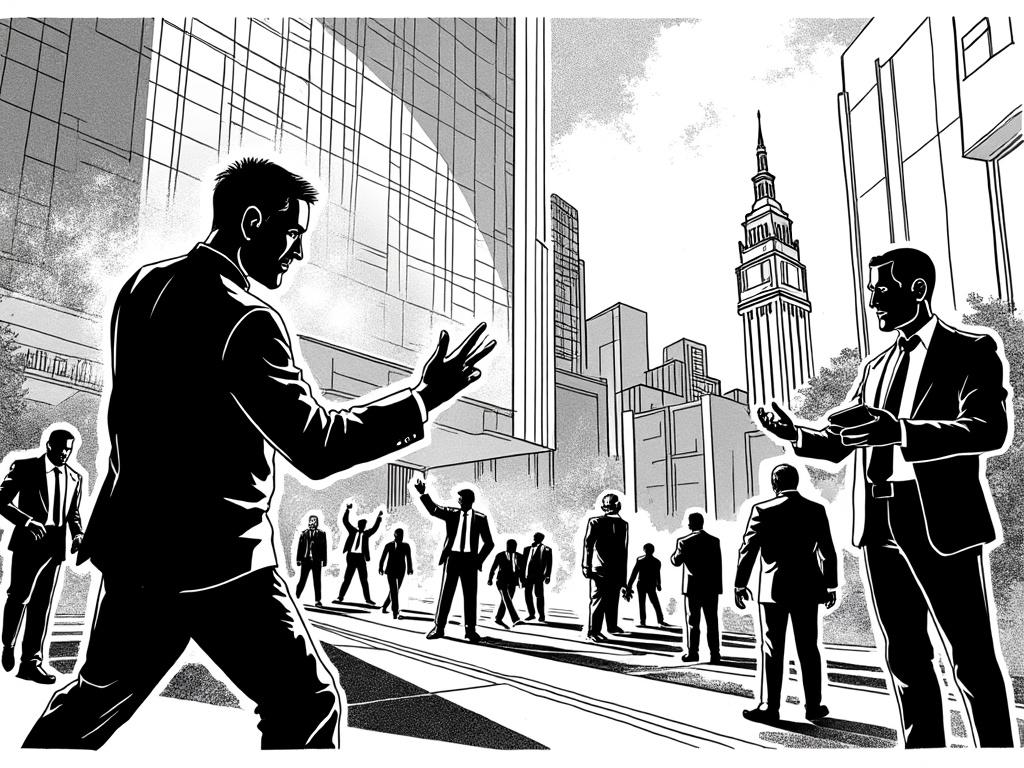
Green Buildings and Sustainable Real Estate: Are They Worth the Investment?
Reading time: 12 minutes
Staring at that energy bill that seems to climb higher each month? You’re not alone. Property owners worldwide are grappling with rising operational costs while facing increasing pressure to reduce their environmental footprint. The question isn’t whether sustainability matters anymore—it’s whether green buildings deliver the financial returns that justify the upfront investment.
Here’s the straight talk: Green building investments aren’t just about feeling good—they’re about creating long-term value in an increasingly eco-conscious market.
Table of Contents
- Understanding Green Buildings: Beyond the Buzzwords
- The Financial Benefits That Actually Matter
- How Green Buildings Perform in Today’s Market
- Overcoming Common Investment Challenges
- Navigating Certification Systems
- Your Investment Roadmap
- Frequently Asked Questions
Understanding Green Buildings: Beyond the Buzzwords
Let’s cut through the marketing fluff. A green building isn’t just about solar panels and recycled materials—it’s a comprehensive approach to construction and operation that reduces environmental impact while maximizing occupant comfort and operational efficiency.
What Makes a Building Truly “Green”?
Green buildings incorporate five key elements that work together to create sustainable value:
- Energy Efficiency: Advanced HVAC systems, high-performance windows, and smart building technologies that can reduce energy consumption by 30-50%
- Water Conservation: Low-flow fixtures, rainwater harvesting, and greywater systems that cut water usage by up to 40%
- Sustainable Materials: Locally sourced, recycled, or rapidly renewable materials that reduce environmental impact
- Indoor Environmental Quality: Improved air quality, natural lighting, and acoustic performance that enhance occupant wellbeing
- Site Sustainability: Responsible land use, stormwater management, and transportation accessibility
The Real-World Impact
Consider the Empire State Building’s retrofit completed in 2019. This iconic structure reduced energy consumption by 38% and carbon emissions by 40%, saving approximately $4.4 million annually in energy costs. The project’s payback period? Just over three years.
Quick Scenario: Imagine you’re a commercial property owner facing rising energy costs and increasing tenant demands for sustainable workspaces. What would a 30% reduction in operating expenses mean for your bottom line?
The Financial Benefits That Actually Matter
The financial case for green buildings rests on four pillars: lower operating costs, higher rental income, increased property values, and reduced investment risks. Let’s examine each with real numbers.
Operating Cost Reductions
According to the U.S. Green Building Council, LEED-certified buildings show an average energy cost savings of 25% compared to conventional buildings. For a 100,000 square foot office building with typical energy costs of $2.50 per square foot annually, this translates to $62,500 in annual savings.
Energy Savings Comparison by Building Type
25% savings
20% savings
35% savings
30% savings
Premium Rental Rates and Occupancy
Green buildings command premium rents and maintain higher occupancy rates. A 2023 study by CBRE found that ENERGY STAR certified office buildings achieved rents that were 3-7% higher than conventional buildings, with vacancy rates 1-2% lower.
As Sarah Chen, Portfolio Manager at Brookfield Properties, explains: “Our tenants increasingly view sustainability features as essential, not optional. Buildings without green credentials are becoming harder to lease at competitive rates.”
How Green Buildings Perform in Today’s Market
The market performance of green buildings tells a compelling story of growing demand and financial outperformance. Let’s look at the data that matters most to investors.
| Metric | Green Buildings | Conventional Buildings | Difference |
|---|---|---|---|
| Average Sale Price/sq ft | $312 | $285 | +9.5% |
| Occupancy Rate | 94.2% | 91.8% | +2.4% |
| Rental Rate Premium | $32.50/sq ft | $30.80/sq ft | +5.5% |
| Time on Market (days) | 89 | 127 | -30% |
| Operating Cost/sq ft | $8.20 | $11.40 | -28% |
Case Study: The Bullitt Center Success Story
Seattle’s Bullitt Center, completed in 2013, demonstrates what’s possible when green building principles are taken to their logical conclusion. This “Living Building” generates more energy than it consumes and processes all its water on-site.
The results? Despite construction costs 20% higher than conventional buildings, the center achieved full occupancy within 18 months and commands rental rates 15% above market average. The building’s energy independence has created predictable operating costs, making it highly attractive to long-term tenants.
Overcoming Common Investment Challenges
Let’s address the elephant in the room: green building investments aren’t without challenges. Understanding these hurdles—and how to navigate them—is crucial for success.
Challenge 1: Higher Upfront Costs
Green building features typically add 2-7% to construction costs. However, this upfront premium is often offset by incentives and long-term savings.
Solution Strategy: Focus on features with the shortest payback periods first. LED lighting, programmable thermostats, and low-flow fixtures often pay for themselves within 1-3 years. Layer in more advanced systems as your comfort level and understanding grow.
Challenge 2: Complexity of Certification Processes
Navigating LEED, ENERGY STAR, or other certification systems can feel overwhelming, especially for first-time green building investors.
Solution Strategy: Start with ENERGY STAR certification—it’s simpler and less expensive than LEED while still providing market recognition. As you gain experience, consider pursuing higher-level certifications for premium properties.
Challenge 3: Finding Qualified Contractors
Not all contractors understand green building techniques, which can lead to cost overruns and performance issues.
Solution Strategy: Seek contractors with green building experience and relevant certifications. The additional vetting time upfront prevents costly mistakes during construction and operation.
Navigating Certification Systems
Understanding the landscape of green building certifications helps you choose the right path for your investment goals and budget.
LEED (Leadership in Energy and Environmental Design)
LEED remains the gold standard for green building certification, with four levels: Certified, Silver, Gold, and Platinum. Certification costs range from $25,000 to $100,000+ depending on project size and complexity.
Best for: High-profile commercial properties where marketing value and tenant attraction are priorities.
ENERGY STAR
ENERGY STAR focuses specifically on energy performance, making it simpler and less expensive than LEED. Buildings must score 75 or higher on the 1-100 ENERGY STAR scale.
Best for: Properties where operational cost reduction is the primary goal, or as a stepping stone to more comprehensive certifications.
BREEAM and Living Building Challenge
BREEAM (popular internationally) and Living Building Challenge (the most rigorous standard) represent other certification options with different focuses and requirements.
Pro Tip: The right certification isn’t always the most prestigious one—it’s the one that aligns with your property type, budget, and market expectations.
Your Investment Roadmap
The sustainable real estate landscape is evolving rapidly, driven by regulatory changes, tenant demands, and climate concerns. Here’s your strategic roadmap for navigating this transformation successfully.
Immediate Actions (Next 6 Months)
1. Conduct an Energy Audit
Identify low-hanging fruit improvements that can deliver immediate savings. Many utilities offer free or subsidized energy audits for commercial properties.
2. Research Local Incentives
Map out available tax credits, rebates, and grants in your area. The Database of State Incentives for Renewables & Efficiency (DSIRE) is an excellent starting point.
3. Benchmark Your Properties
Use EPA’s Portfolio Manager to establish baseline energy and water performance metrics. This data becomes crucial for tracking improvements and pursuing certifications.
Medium-Term Strategy (6-18 Months)
4. Implement Quick Wins
Focus on improvements with payback periods under three years: LED lighting retrofits, programmable thermostats, and weatherization improvements.
5. Explore Financing Options
Investigate green building loans, Property Assessed Clean Energy (PACE) financing, and utility rebate programs that can offset upfront costs.
Long-Term Vision (18+ Months)
6. Plan Major Systems Upgrades
As HVAC, roofing, and other major systems reach end-of-life, replace them with high-efficiency alternatives. The incremental cost difference is often minimal when replacement is already necessary.
7. Consider Renewable Energy
Solar installations have become increasingly cost-effective, with many commercial projects achieving payback periods of 5-8 years.
The convergence of environmental necessity, regulatory pressure, and market demand is creating an unprecedented opportunity for forward-thinking real estate investors. Properties that adapt now will capture premium valuations and tenant demand, while those that delay may find themselves competing in an increasingly challenging market.
As we look toward 2030 and beyond, the question isn’t whether to invest in green buildings—it’s how quickly you can position your portfolio for this sustainable future. What steps will you take this month to begin your green building journey?
Frequently Asked Questions
What’s the typical payback period for green building investments?
Payback periods vary significantly based on the improvements made and local energy costs. Simple upgrades like LED lighting often pay for themselves within 1-2 years, while comprehensive green building retrofits typically achieve payback in 5-10 years. However, when you factor in higher rental rates, reduced vacancy, and increased property values, the effective payback period is often much shorter than pure energy savings calculations suggest.
Do green buildings really command higher rents and sale prices?
Yes, multiple studies consistently show green buildings outperforming conventional properties. ENERGY STAR certified buildings typically achieve 3-7% higher rents and 6-10% higher sale prices. The premium varies by market, but the trend is consistent across property types and geographic regions. More importantly, green buildings often experience faster lease-up times and lower vacancy rates.
Is it worth retrofitting an existing building versus building new?
Retrofitting existing buildings often provides better returns on investment than new construction. While new buildings can achieve higher efficiency levels, retrofits typically cost 50-70% less than new construction while still capturing 70-80% of the energy savings. The key is focusing on high-impact improvements that align with natural replacement cycles for major building systems.

Article reviewed by Georgi Ivanov, Corporate Lease Negotiator | Industrial Real Estate Strategist, on July 7, 2025
